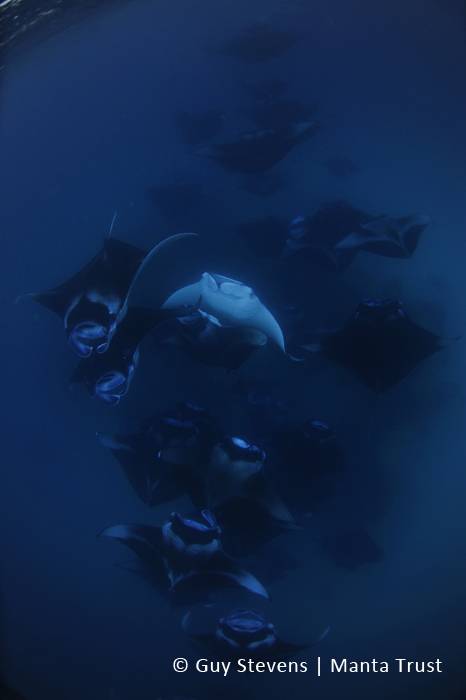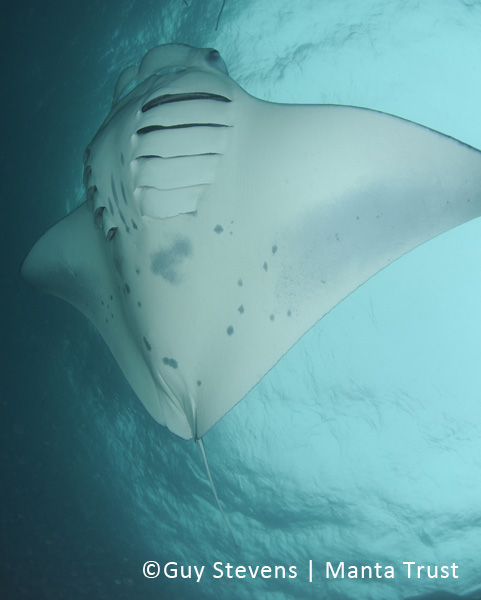Sunny Maldivian Hulhangu season
It’s the end of September…a beautiful sunny day in the Maldives, and the ocean is dead calm. Wait a moment! It’s September, the heart of the Hulhangu, the stormy southwest monsoon, where are the storms!? This sentence encapsulates what’s been happening in the Maldives for the past three years, and what seems to be happening again this year! The southwest monsoon is generally characterized by strong winds often associated with heavy rain showers, conditions that create upwelling currents bringing nutrient rich waters to the surface. Such nutrients initiate a process that, through high primary productivity, will finally result in waters filled with zooplankton…the manta ray’s food!

© Guy Stevens Manta Trust
The start of the 2013 manta season in Baa Atoll was very promising. Strong winds blew for weeks and the water turned green as a result of high phytoplankton density. For the first time after many years we recorded courtship behaviour and within the first month of surveys 23 adult females have been recorded having fresh mating scars, clear indications of recent mating activity! Then something changed, storms became less and less common and the water visibility increased as a result of lack of nutrients.
By the end of September, four months into the southwest monsoon the total number of manta sightings was the lowest ever recorded! Furthermore, only one whale shark has been sighted and identified, another alarming bit of data when compared to the 49 whale shark encounters of 2008 or the 33 of 2009! Is this lack of plankton rich water part of a natural, long term, cycle? Is it related to large scale climatic changes? Beside the lack of monsoonal winds, which other factors influence plankton concentrations at specific locations? Answering these questions will be one of the upcoming challenges we’re ready to face!
On a bright side, the month of October brought an unexpected surprise; waters turned deep green and zooplankton bloomed creating the perfect conditions for mass feeding aggregations. Sighting of mantas during this month reached almost 1,000 and by the end of such a productive month an amazing discovery awaited us; three mature females showed the first signs of certain pregnancy! For the past four years we recorded an alarming lack of reproduction among mantas; having recorded courtship behaviours and pregnancies this year brings hope to the Maldivian manta population and we now await impatiently for a new generation of our favourite gentle giants of the ocean!

